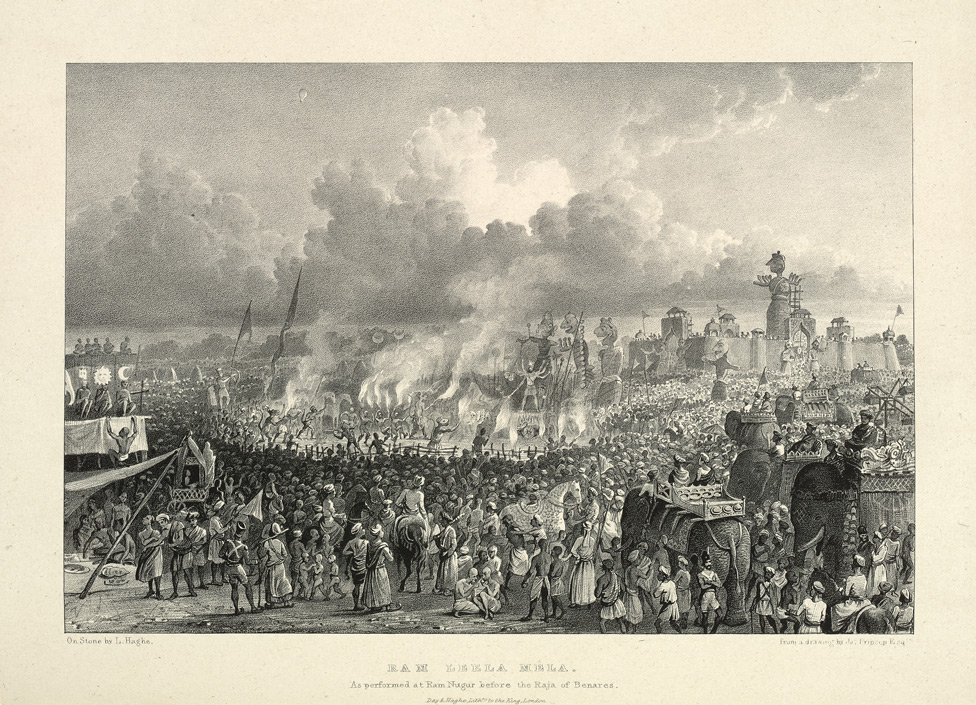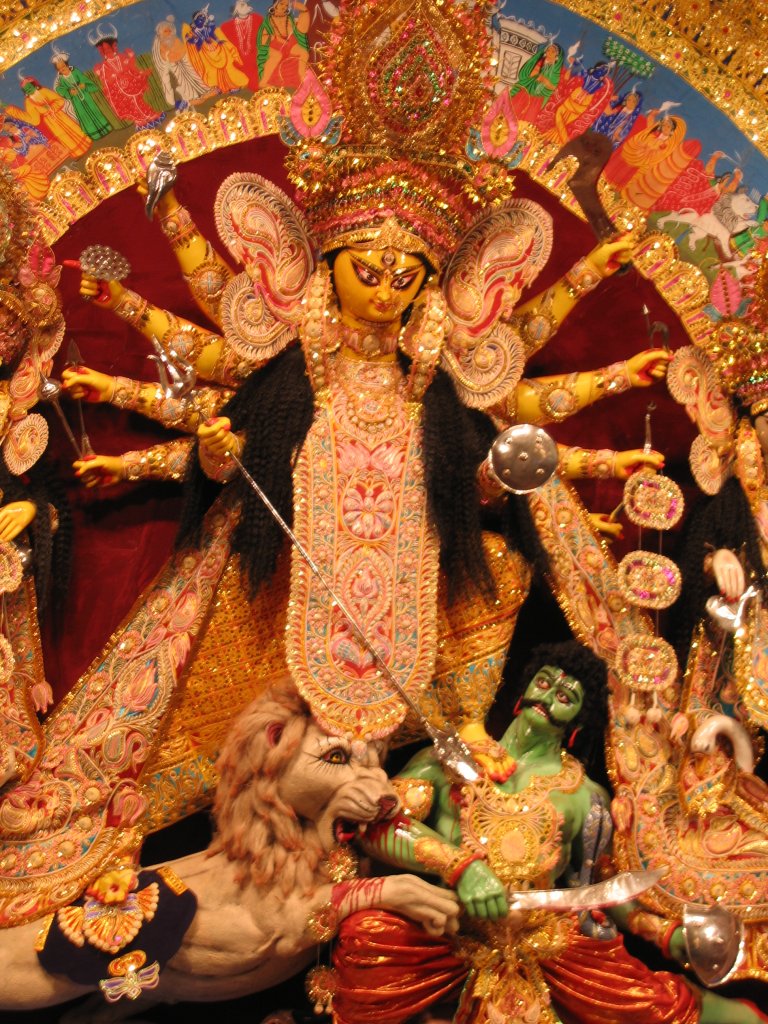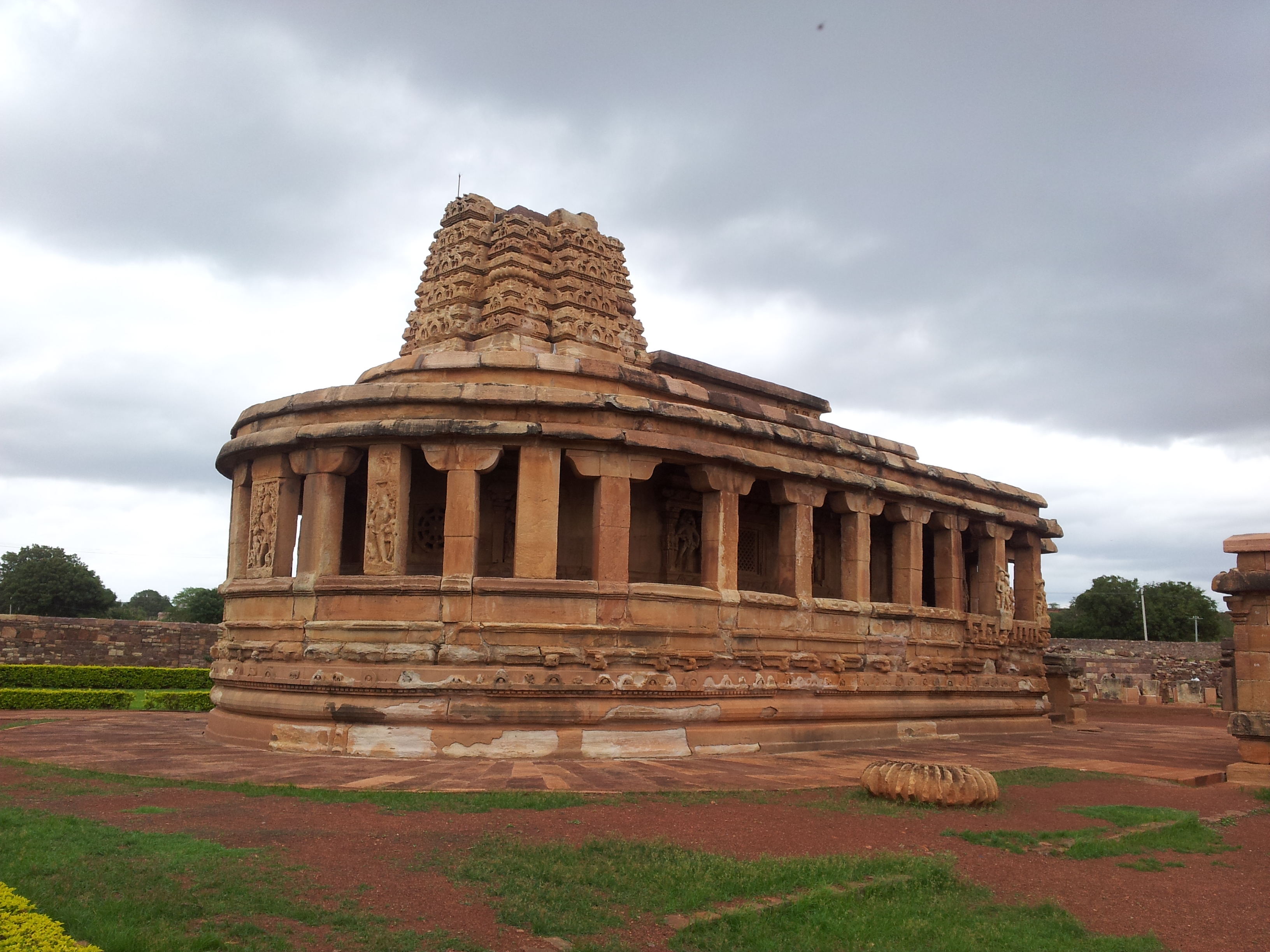|
Navaratri
Navaratri () is an annual Hindu festival observed in honor of the goddess Durga, an aspect of Adi Parashakti, the supreme goddess. It spans over nine nights, first in the month of Chaitra (March/April of the Gregorian calendar), and again in the month of Ashvin (September–October). It is observed for different reasons and celebrated differently in various parts of the Hindu Indian cultural sphere. Theoretically, there are four seasonal ''Navaratris''. However, in practice, it is the post-monsoon autumn festival called Sharada Navaratri. There are 2 Gupta Navaratris or "Secret Navaratris" as well, one starting on the Shukla Paksha Pratipada of the Magha Month (Magha Gupta Navaratri) and another starting in the Shukla Paksha Pratipada of Ashadha Month. Etymology and nomenclature The word ''Navarātram'' means "a period of nine nights" in Sanskrit, ''nava'' meaning "nine" and ''ratri'' meaning "night". Dates and celebrations In the eastern and northeastern states of ... [...More Info...] [...Related Items...] OR: [Wikipedia] [Google] [Baidu] |
Vijayadashami
Vijayadashami (), more commonly known as Dassahra in Hindi, and also known as Dashāhra or Dashain in Bhojpuri, Maithili and Nepali, is a major Hindu festival celebrated every year at the end of Durga Puja and Navaratri, Navarahtri. It is observed on the tenth day of the month of Ashvin, the seventh in the Hindu Calendar, Hindu lunisolar calendar. The festival typically falls in the Gregorian calendar months of September and October, more specifically between 27 September and 26 October. It is celebrated on the tenth day of the waxing moon (Shukla Paksha) of the Ashvayuja month. Vijayadashami is observed for different reasons and celebrated differently in various parts of India and Nepal. In the southern, eastern, northeastern, and some northern states of India, Vijayadashami marks the end of Durga Puja, commemorating goddess Durga's victory against Mahishasura to restore and protect ''dharma''. In the northern, central, and western states, it marks the end of Ramlila and com ... [...More Info...] [...Related Items...] OR: [Wikipedia] [Google] [Baidu] |
Hindu Festivals
Hindus celebrate a significant number of festivals and celebrations, many of which commemorate events from ancient India and often align with seasonal changes. These festivities take place either on a fixed annual date on the solar calendar or on a specific day of the lunisolar calendar. The observance of these festivals often varies by region, with many celebrated predominantly by particular sects or in specific areas of the Indian subcontinent. Terminology Dolu Utsava ''Utsava'' is the Sanskrit word for festivals. The Sanskrit word ''Utsava'' comes from the word ''ut'' meaning "starts" and ''sava,'' which means "change" or "decline". ''Dolu'' means "seasonal colouring". Both the solar and the lunisolar calendars operate based on Dolu Utsava. Observance periods (''tithi'') Hindu calendar dates are usually in accordance with a lunisolar calendar. In Vedic timekeeping, a ''māsa'' is a lunar month, a ''pakṣa'' is a lunar fortnight (two weeks), and a '' tithi'' is a lu ... [...More Info...] [...Related Items...] OR: [Wikipedia] [Google] [Baidu] |
Durga
Durga (, ) is a major Hindu goddess, worshipped as a principal aspect of the mother goddess Mahadevi. She is associated with protection, strength, motherhood, destruction, and wars. Durga's legend centres around combating evils and demonic forces that threaten peace, prosperity, and dharma, representing the power of good over evil. Durga is believed to unleash her divine wrath against the wicked for the liberation of the oppressed, and entails destruction to empower creation. Durga is seen as a motherly figure and often depicted as a beautiful woman, riding a lion or tiger, with many arms each carrying a weapon and often defeating demons. She is widely worshipped by the followers of the goddess-centric sect, Shaktism, and has importance in other denominations like Shaivism and Vaishnavism. The most important texts of Shaktism, Devi Mahatmya and Devi Bhagavata Purana, revere Devi (the Goddess) as the primordial creator of the universe and the Brahman (ultimate truth and reali ... [...More Info...] [...Related Items...] OR: [Wikipedia] [Google] [Baidu] |
Durga Puja
Durga Puja (ISO 15919, ISO: , ), also known as Durgotsava or Shaaradotsava, is an annual festival originating in the Indian subcontinent which pays homage to the Hinduism, Hindu goddess Durga, and is also celebrated because of Durga's victory over Mahishasura. It is the biggest festival of Bengali Hindus and the Indian state of West Bengal. Durga Puja in Kolkata, Durga Puja as celebrated in Kolkata, West Bengal's capital city, was inscribed on the UNESCO Intangible Cultural Heritage Lists, intangible cultural heritage list of UNESCO in December 2021. In addition to West Bengal, Hindu Bengalis are native to Bangladesh and Indian state of Tripura, Barak Valley, Assam (Barak Valley), Jharkhand and Kosi-Seemanchal, Bihar (Kosi-Seemanchal); Therefore, Durga Puja is performed with great devotion in these places as well. The festival is observed in the Indian calendar in the month of Ashwin, Ashvin, which corresponds to September–October in the Gregorian calendar. Durga Puja is ... [...More Info...] [...Related Items...] OR: [Wikipedia] [Google] [Baidu] |
Dashain
Dashain or Bada'dashain, also known as Vijaya Dashami in Sanskrit, is a Hindu religious festival in Nepal, Sikkim, West Bengal, Assam, South India, and Sri Lanka. It is also celebrated by other religions in Nepal and elsewhere, including the Lhotshampa of Bhutan and the Burmese Gurkhas of Myanmar. The festival is also known as Nauratha, derived from the Sanskrit word for the festival: Navaratri (Nine Nights). The longest festival in the Bikram Sambat and Nepal Sambat annual calendars, it is celebrated by Nepali Hindus and their diaspora. In Nepal, the 15-day festival is the country's longest. People return from all parts of the world and different parts of the country to celebrate together. The festival falls in September or October, beginning on the Paksha#Shukla Paksha, Shukla Paksha (bright lunar night) of the month of Ashwin, Ashvin and ending on Purnima (day), Purnima, the full moon. Of the fifteen days it is celebrated, the most celebrated are the first, seventh, eighth, ... [...More Info...] [...Related Items...] OR: [Wikipedia] [Google] [Baidu] |
Chaitra
Chaitra () is a month of the Hindu calendar. In the standard Hindu calendar and India's national civil calendar, Chaitra is the first month of the year. It is the last month in the Bengali calendar, where it is called Choitro. Chaitra or Chait is also the last month in the Nepali calendar (the Vikram Samvat), where it commences in mid-March. Chittirai is the first month in the Tamil calendar. In the Sindhi calendar, this month is referred to as Chet and is marked by the celebration of the Cheti Chand (birth of Jhulelal, an incarnation of Vishnu). In the Vaishnava calendar, Vishnu governs this month. In solar religious calendars, Chaitra begins with the Sun's entry into Aries. In the more traditional reckoning, the first month commences in March or April of the Gregorian calendar, depending upon whether the adhika masa (extra month for alignment of lunar or solar calendar) was observed in the year. The first day of Chaitra is marked as the , the Hindu lunar new year. N ... [...More Info...] [...Related Items...] OR: [Wikipedia] [Google] [Baidu] |
Ashvin (month)
Ashvin or Ashwin or Ashwan (; ; Malay/ Indonesian: ''Aswin''; Thai: ''Asawin''), also known as Aswayuja, is the seventh month of the lunisolar Hindu calendar, the solar Tamil calendar, where it is known as Aippasi, and the solar Indian national calendar. It is the sixth month of the solar Bengali calendar and the seventh of the lunar Indian calendar of the Deccan Plateau. It falls in the season of ''Sharada'', or autumn. In Hindu astrology, Ashvin begins with the Sun's enter into Virgo. It overlaps with September and October of the Gregorian calendar and is the month in which Diwali, the festival of lights, is celebrated according to the amanta tradition (Diwali falls in Kartika according to the purnimanta tradition). In lunar religious calendars, Ashvin begins on the new moon or the full moon around the time of the September equinox. Etymology Ashvini is the first star that appears in the evening sky. In Indian astrology, it is the head of Aries, or the first of the 2 ... [...More Info...] [...Related Items...] OR: [Wikipedia] [Google] [Baidu] |
Devi Mahatmya
The ''Devi Mahatmya'' or ''Devi Mahatmyam'' () is a Hindu philosophical text describing the Goddess, known as Mahadevi, Adi Parashakti or Durga, as the supreme divine parabrahma, ultimate reality and creator of the universe. It is part of the Markandeya Purana, Mārkandeya Purāna (chapters 81 to 93). ''Devi Mahatmyam'' is also known as the ''Durgā Saptashatī'' () or Śata Chandī (शत् चंडी) and ''Chandi Path'' (). The text contains 700 verses arranged into 13 chapters. It is one of the most important texts in Shaktism, along with ''Devi-Bhagavata Purana'' and Devi Upanishad. The text is one of the earliest extant complete manuscripts from the Hindu traditions which describes reverence and worship of the feminine aspect of God. The ''Devi Mahatmyam'' describes a storied battle between good and evil, where the Devi manifesting as goddess Durga leads the forces of good against the demon Mahishasura—the goddess is very angry and ruthless, and the forces of goo ... [...More Info...] [...Related Items...] OR: [Wikipedia] [Google] [Baidu] |
Mahishasura
Mahishasura (, ) is a bovine asura in Hinduism. He is depicted in Hindu texts, Hindu literature as a deceitful demon who pursued his evil ways by shape-shifting. Mahishasura was the son of the asura Rambha (asura), Rambha and the brother of buffalo-demoness named Mahishi (demoness), Mahishi. He was ultimately killed by the goddess Durga with her trishula (trident) after which she gained the epithet Mahishasuramardini ("Slayer of Mahishasura"). Mahishasura had a son named Gajasura. The Navaratri ("Nine Nights") festival eulogises this battle between Mahishasura and Durga, culminating in Vijaya Dasami, Vijayadashami, a celebration of his ultimate defeat. This story of the "triumph of good over evil" carries profound symbolism in Hinduism, particularly Shaktism, and is both narrated as well as reenacted from the Devi Mahatmya at many South and Southeast Asian Hindu temples. The ''Mahishasura Mardini Stotra'' by Adi Shankara was written to commemorate her legend. Legend Mahis ... [...More Info...] [...Related Items...] OR: [Wikipedia] [Google] [Baidu] |
Shukla Paksha
Paksha () refers to a fortnight or a lunar phase in a month of the Hindu lunar calendar. Literally meaning "side", a paksha is the period either side of the '' purnima'' ( full moon day). A lunar month in the Hindu calendar has two fortnights, and begins with the ''amavasya'' ( new moon). The lunar days are called '' tithis;'' each month has 30 ''tithi''s, which may vary from 20 – 27 hours. A paksha has 15 ''tithi''s, which are calculated by a 12 degree motion of the moon. The first fortnight between the new moon day and the full moon day is called the Gaura Paksha or Shukla Paksha (), the period of the brightening moon ( waxing moon), and the second fortnight of the month is called the Vadhya Paksha or Krishna Paksha (), the period of the fading moon ( waning moon).Hindu calendar The [...More Info...] [...Related Items...] OR: [Wikipedia] [Google] [Baidu] |
Gujarat
Gujarat () is a States of India, state along the Western India, western coast of India. Its coastline of about is the longest in the country, most of which lies on the Kathiawar peninsula. Gujarat is the List of states and union territories of India by area, fifth-largest Indian state by area, covering some ; and the List of states and union territories of India by population, ninth-most populous state, with a population of 60.4 million in 2011. It is bordered by Rajasthan to the northeast, Dadra and Nagar Haveli and Daman and Diu to the south, Maharashtra to the southeast, Madhya Pradesh to the east, and the Arabian Sea and the Pakistani province of Sindh to the west. Gujarat's capital city is Gandhinagar, while its largest city is Ahmedabad. The Gujarati people, Gujaratis are indigenous to the state and their language, Gujarati language, Gujarati, is the state's official language. The state List of Indus Valley civilisation sites#List of Indus Valley sites discovered, ... [...More Info...] [...Related Items...] OR: [Wikipedia] [Google] [Baidu] |
Dance In India
Dance in India comprises numerous styles of dances, generally classified as Indian classical dance, classical or Folk dance in India, folk. As with other aspects of Indian culture, different forms of dances originated in different parts of India, developed according to the local traditions and also imbibed elements from other parts of the country. Sangeet Natak Academy, the national academy for performing arts in India, recognizes eight traditional dances as Indian classical dances, while other sources and scholars recognize more. These have roots in the Sanskrit text ''Natya Shastra'',, Quote: "the Natyashastra remains the ultimate authority for any dance form that claims to be 'classical' dance, rather than 'folk' dance". and the Religion, religious performance arts of Hinduism., Quote: Hindu classical dance-forms, like Hindu music, are associated with worship. References to dance and music are found in the Vedic literature, (...)"., Quote: All of the dances considered to be pa ... [...More Info...] [...Related Items...] OR: [Wikipedia] [Google] [Baidu] |






